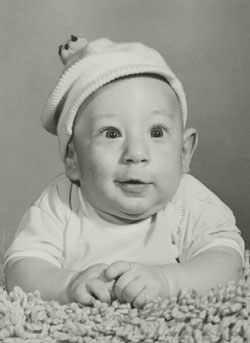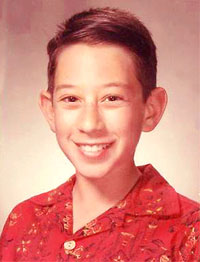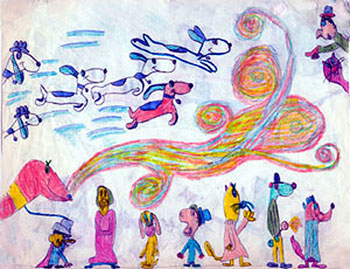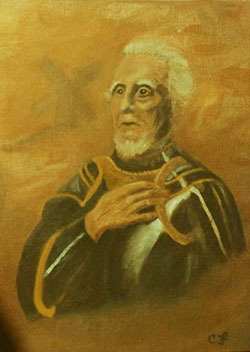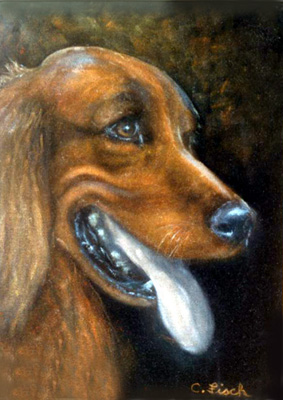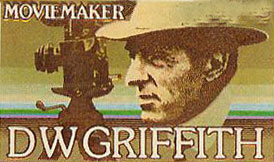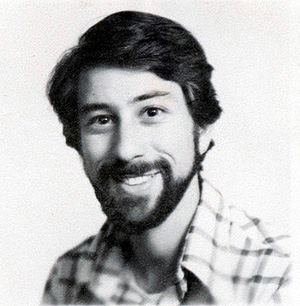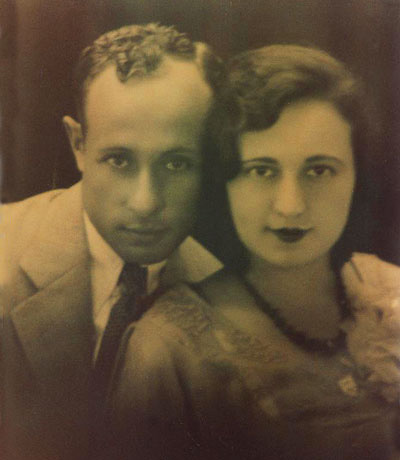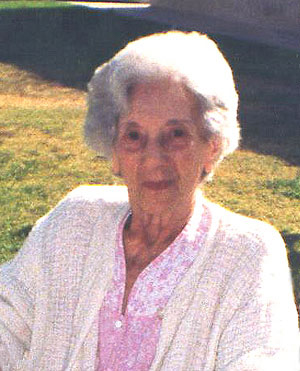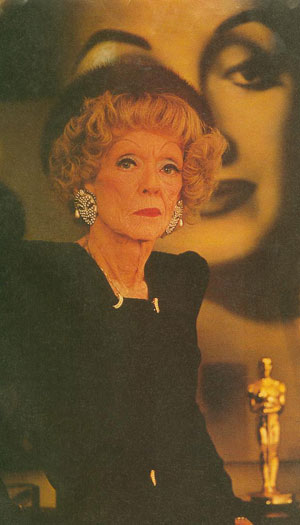Are these Hollywood stars of the early talkie era? Not
exatly. This is a portrait of my maternal grandparents Frank and Goldie
at the time of their marriage in 1931. They both had come from Poland
and met in Mexico where their families had emigrated during the 1920s.
On September 1, 1939 they moved to San Diego, California and began their
lives as American citizens. Ironically, that was the very day Hitler's
army marched into their former homeland. Alas, they both died young,
still in their 50s, Frank in 1963 and Goldie six years later.
Immediately upon graduation from UCLA, I embarked on a professional
career as a theater actor, eventually working (and triumphing) in
my home town at the Old Globe Theatre, San Diego where I won a Best
Actor in a Comedy Role award. Prior to that I was a member of Ralph
Waite's Los Angeles Actors Theater Playwrights Workshop headed by
the notorious Miguel Pinero. Eventually I moved to New York City (the
duty of all serious actors) and immersed myself in the superstructure,
the counterculture, the infrastructure and the inner universe and
made numerous forays into regional theater, summer stock and even
The Boston Shakespeare Company.
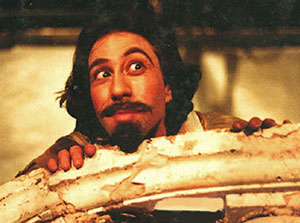
After seven or eight years as a theater actor I hunkered down
in NYC and focused all my attention to writing, literature, art and
reality. To support myself I worked as a "temp" for some
of the major corporations of the world, having mastered the brave
new world of computer word processing. (My life at that time, 1980s
NYC was a cross between "After Hours," "Desperately
Seeking Susan," "Repo Man" and the movie John Waters
would love to make but doesn't have the balls to.)

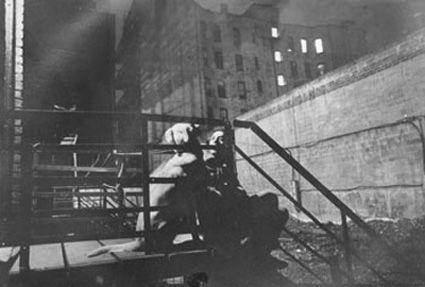
With my faithful companion Woodrow Woodstock Wilson
on a cold winter night in our "backyard" on Ludlow Street,
The Lower East Side, NYC early in 1983. A charming neighborhood, childhood
home to The Marx Brothers, Lee Strasberg, etc.; by the '70s and '80s
it had become a haven for punks, drug addicts, lost poets, misplaced
persons, burnt out hippies, beatniks and other artists.
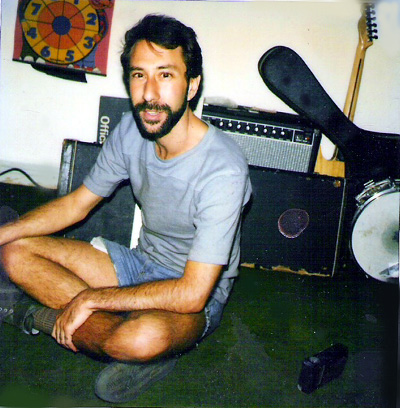
In the Village, 1982
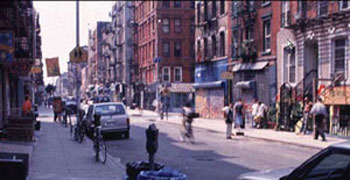
Ludlow Street, around the corner from Katz's Deli
("Buy a salami for your boy in the army!" said the sign
in the window). First a neighborhood of pushcarts and Dead End kids,
then a no man's land of pushers and dead kids. Leave it to the pioneering
spirit of artists like me to stake a claim there and strive to bring
life to such a miserable world. Well, we did it.
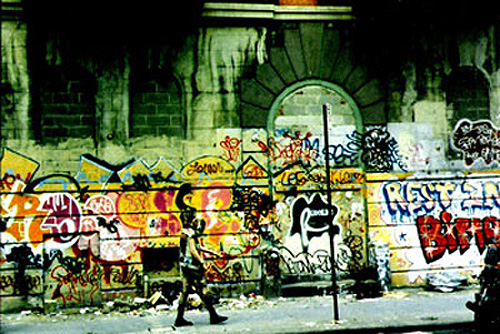
The May 28, 1984 issue of "New York" magazine was devoted
to The Lower East Side and the first hints of that area's future gentrification.
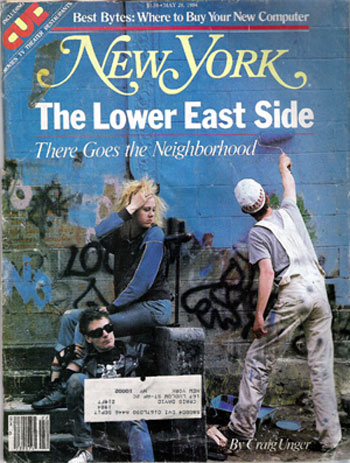
The following description gives a very good idea of
what this place was like when I lived there:
"In the seventies hundreds of buildings were abandoned,
buildings with no heat, no hot water, no locks. The landlords had
wrung all the money they could get out of them....Today [1984] whole
blocks between Avenues A and D are lined with the carcasses of buildings.
Vast stretches of land are covered with crumbled bricks and cement.
Until recently, lines of drug buyers snaked around the blocks....When
Father Moloney found a dead body near the Christadora Building last
year, the police acted almost unconcerned. 'We are in a no man's land,'
he was told. 'They can dump anything they want here.'"
That "dump" was my home for five years.
What an education -- what an experience!
Now I hear the former Jewish ghetto is getting gentrified
and is full of "yuppies." When I returned for a visit in
1993 I was amazed to discover "The Hamlet Cafe" located
in my building!
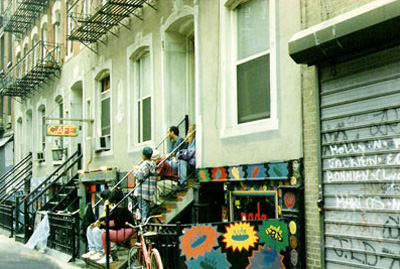
There were no pastel colors or painted flowers on
the Lower East Side back in the '70s and '80s. An aura of gloom, neglect,
decay and ghosts prevailed, but there was utter freedom as well.
KATZ'S DELI
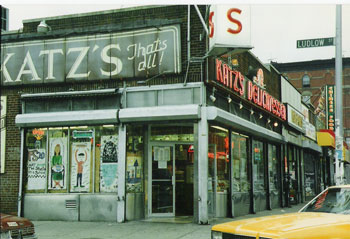
Dear Mabel Jean,
I'm envious of you goin' to New York City. I wisht I
could go agin myself. Now you ast me about good eateries and cheap.
Well, one place I heartily recommend is this here Katz's
Deli, what you call the oldest delicatessen in New York City. Says
so right there on the sign out front, next to the date "1888."
(The cashier inside looks like she's that vintage too, but don't let
her scare ya.)
Now Mabel Jean, I wanna warn ya -- it's in a raunchy
part o' town, so if I was you I'd go there in the daylight and I'd
bring with me a couple a hefty-type bodyguards which I'm sure you
won't have no trouble findin' your first night in town.
Tell the cabbie you wanna go to How-ston Street. No
use sayin' Hue-ston or he won't take you there even though that's
what it is. Most cabbies get jittery when you drive east of First
Avenue in that part of town, something about No-Man's Land and Alphabet
City, but just tell him it ain't much further -- to drop you off at
Ludlow Street.
Now when you gets there, the first thing you gotta do
is step aroun' the derelick that stands in the doorway droolin' with
one shoe off ever day of the week 'cept the weekends, and if you happens
to gets there on the weekends you jes' wend yer way through all them
chatty visitors from Queens.
Once you step inside you'll see a big ole colored man
sittin' by the door. That's the ticket man. There's always a New York
City cop standin' wid him to keep him company. But the ticket man
is always sittin'. He's the one with the big bulgy bullfrog eyes that
look like they might fall out onto the floor and him not care about
it ner nobody else. He'll hand you a ticket.
This here ticket is for you to go to the counter to
order your hot corn beef sandwich. That's the only thing I'd recommend,
Mabel Jean, as it's the only thing I've ever eaten there, aside from
the pickles and that's cuz they come with the sandwich.
Now Mabel Jean. Pay close attention. There's a big sign
in big letters behind the counter that says "NO TIPPING."
But I want you to know it's just there as a gimmick. It's whattcha
call a ruse. Because if you want a sandwich, Mabel Jean, YA GOTTA
TIP the counterman. It's as simple as that. But ya can't let the cashier
nor the cop see ya do it, that's what. Under NO circumstances. (I
don't think the ticket man cares one way or 'tother. His job seems
to stop right after he hands out them tickets.)
I don't know it for a fact, but I have a feelin' that
if you get CAUGHT tippin' a counterman, an alarm goes off, thirty
cops rush in and next thing ya know you're on the inside of the New
York City Hoosegow which is the last place on earth you wanna be outside
o' the City Morgue. So think about it.
Now the counterman I'd always goed to is a big white
lumox with big bulgy eyes jes' like the ole black ticket man, 'ceptin'
this one wears glasses, so you can be sure HIS eyes ain't gonna drop
off into the corn beef he's choppin' -- that is, unless his glasses
drops off too, you see what I mean?
Anyways, you hands that counterman your ticket and he'll
hand you a big greasy slab of steamin' hot corn beef. It's for you
to nibble on right there and then. And THAT'S when you hand him the
TIP. Now Mabel Jean, you gotta do it jes' right an' act like yer mindin'
yer own bidnis and pertend like nothin's goin' on. And whatever you
do, DON'T LOOK AT THE CASHIER AND DON'T LOOK AT THE COP.
If all goes well and it's a nice big tip, you gets extra
corn beef on yer sandwich and extra pickles on the side. Which is
what I like. But if you DON'T give him a good tip, he gets skimpy
on both the corn beef AND the mustard, NOT to mention the pickles,
with absolutely NO regard to the very real possibility that you might
have ended up in the New York City Hoosegow with a guilt trip on top
of it and somethin' that would have given you a bummer for the rest
of the day. Katz's Deli -- remember it.
Enjoy yer trip, Mabel Jean, and drop me a card.
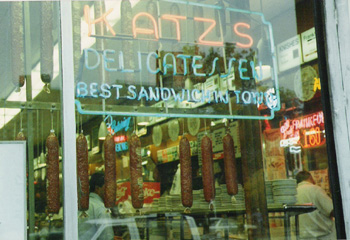
UPDATE AND HISTORICAL REVISION: I have just discovered
an essay written by Tom Wolfe in 1964 called "Putting Daddy On."
He describes the Lower East Side 20 years before the "New York"
magazine article. So that place had been in a state of decay for a
LONG LONG TIME:
"There are whole streets on the Lower East Side
where it looks as if the place had been under intense heat and started
melting and then was suddenly frozen in amber. Half the storefronts
are empty and there is a gray film inside the windows. Pipes, bins,
shafts of wood and paper are all sort of sliding down the walls. The
ceilings are always covered with squares of sheet metal with quaint
moldings on them to make an all-over design, and they are all buckling.
The signs have all flaked down to metal the color of weathered creosote,
even the ones that say Bodega y Carneceria. Everything
is collapsing under New York moss, which is a combination of lint
and soot....Slum tenaments are worse than they sound. The hallway
is painted with a paint that looks exactly the color, thickness and
lumpiness of real mud. At some point they painted the mud color over
everything, even over the doorbell-buzzer box. They didn't bother
to pull the wiring out. They just cut the wires and painted over the
stubs. And there they have it, the color called Landlord's Brown,
immune to time, flood, tropic heat, arctic chill, punk rumbles, slops,
blood, leprotic bugs, cockroaches the size of mice, mice the size
of rats, rats the size of Airedales, and lumpenprole tenants."
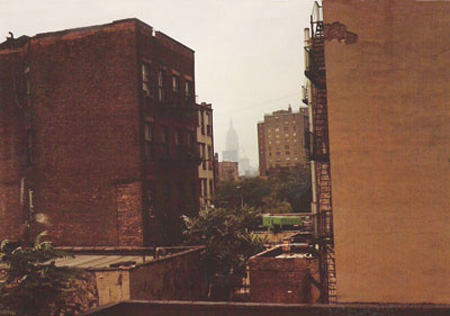
View
from my Ludlow Street fire escape looking north toward The Empire
State Building, 1980.
"I look out my barred window onto dreary tenements.
The sky is grey. It drizzles.
The bars impede the view, but I need them.
They keep out the burglars.
A sorry-looking house plant left on the fire escape
sways in the rain.
Puddles on the blacktop roof across the way reflect
nothing
not even sorrow.
I am not sorrowful -- don't get me wrong!
But Manhattan's siren song has dashed so many a young
follower onto its rocky shores that even I cannot remain blind to
the resultant carnage.
There are those who survive -- they rock-scramble up
to safety only to be met by further perils.
Some find secluded nooks and venture out solely for
sustenance.
Some, heedless of morals and other man-made concoctions,
find nourishment, flattery, encouragement in the least likely situations.
I have scrambled to safety, for I am an expert rock
climber.
I have found a safe nook. I venture out. I witness the
casualties, the successes. All are huddled together, feigning independence.
The endless fates, the ever-changing combinations --
all are visible here.
I look on in wonder. For two years and more I have pretended
that I was not a part of this drama. At last I realize the fact I
cannot escape:
I am that drama. That drama is me."
-Craig Calman
September 1982
"New York is a wonderful
city. I'm glad to be putting down some kind of roots here. It is going
to be the capital of the world. It isn't like the rest of the country
-- it's like a nation itself -- more tolerant than the rest in a curious
way. Littleness gets swallowed up here. All the viciousness that makes
other cities vicious is sucked up and absorbed in New York. It is
truly the great city of the world -- an organism in itself -- neither
good nor bad but unique."
-John Steinbeck, 1945
By 1986 somehow having survived all my misadventures, it was time
to round out my American Cultural Experience. So I moved to Hollywood,
California where I was soon rubbing elbows with some of the great
luminaries. Bette Davis, residing just below Sunset Strip in her old
age declared me "a very talented writer" and wanted to play
my 100-year-old Shakespearean star in "THE TURN OF THE CENTURY."
Alas, the great diva passed away the very month I completed the feature
length screenplay, which benefits from her sage advice.
Academy Award-winning director Robert Wise found the script "very
interesting and very well written." Actress/producer Martha Scott,
who produced Henry Fonda's one man shows and was Humphrey Bogart's
co-star in "The Desperate Hours" predicted I "will
be recognized by the industry as an exciting and enduring talent."
And the legendary Hal Roach, producer of the Our Gang and Laurel &
Hardy comedies of the '20s and '30s took me under his wing and at
the age of 96 asked me to help him write the script for his "come
back comedy." The photo below shows us in 1982 at his home in
Bel Air when Mr. Roach was a youthful 90.
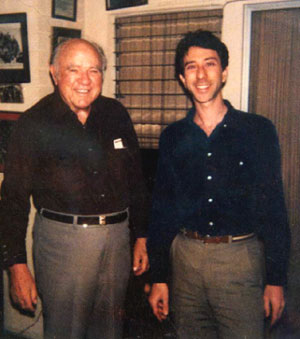
NOTE: The two paragraphs below were typed nearly
ten years ago and may not necessarily hold true today. I reserve the
right to modify my attitudes, thoughts, beliefs and conclusions at
any time and to hold harmless any attempts at sabotage.
I have worked in the offices of virtually all of the major motion
picture studios in Hollywood and yet I have remained "fiercely"
independent. To date I have completed five full length stage plays
as well as feature length screenplays, one-acts, magazine articles
and a collection of rhymes, ditties and musings. I have "novelized"
"THE TURN OF THE CENTURY" but as yet my works have been
blessed by no major productions. Perhaps this shall all change once
my newly-created website makes its world-wide debut.
More than one person this past year [2004] has stated to me point
blank that my fate may be that akin to Van Gogh's -- an artist unrecognized
during his own lifetime. I've considered the possibility, considering
how none of my plays have ever been produced nor any of the movies
I see so clearly in my mind's eye have yet to be created. But I could
just as easily yet have a career like Edna May Oliver, couldn't I?
and bring a faint smile to those quaint enough to remember. Or shall
I fade away in a mysterious mist like B. Traven? Perhaps the jerks
who made that comment just have a desire to cut my ear off. Perhaps
we are all doomed, dear reader. Well, if so, then better to be doomed
as a dreamer than as a purveyor of nightmares, cruelty, indifference,
mediocrity, banality or wanton abandon, says I. Come what may, I can
honestly state that I have done my best and have tried to meet every
challenge courageously, honestly and truthfully.
Come what may, let us pray that great days await us all -- that
a better world can be achieved by way of continual personal and collective
efforts, with the best of intentions, with the highest good will.
Who wants to join me to strive for that?
"O for a Muse of fire that would ascend the brightest heaven
of invention; A kingdom for a stage, princes to act and monarchs
to behold the swelling scene!"
[DIRECTOR'S NOTE: Above speech should have the earnest and simple
passion for Truth and Goodness as the sincere and rousing speech given
by Charlie Chaplin in "The Great Dictator" (1940).]
https://www.youtube.com/watch?v=QcvjoWOwnn4
Here is a link to my April 2001
TV interview:
https://vimeo.com/29298551
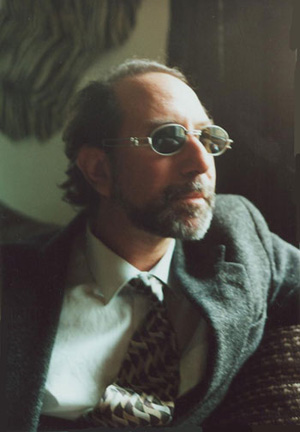
Daddy-O faces the second half of the first decade of The New Millennium.
What sort of world is in the making in this post 9/11 epoch, kids?

Mummy and me.
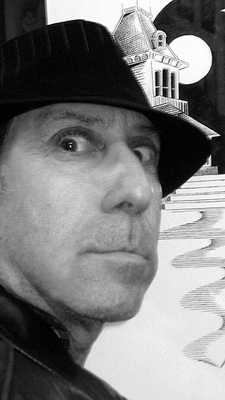
"Atheism In The Name Of God is
an abandonment of all religious beliefs, including atheism, which
in practice is the stubbornly held idea that the world is a mindless
mechanism. Atheism In The Name Of God is giving up the attempt to
make sense of the world in terms of any fixed idea or intellectual
system. It is becoming again as a child and laying oneself open to
Reality as it is actually and directly felt, experiencing it without
trying to categorize, identify or name it." - Alan Watts

Yours truly just playing myself, finally, June
11, 2012.
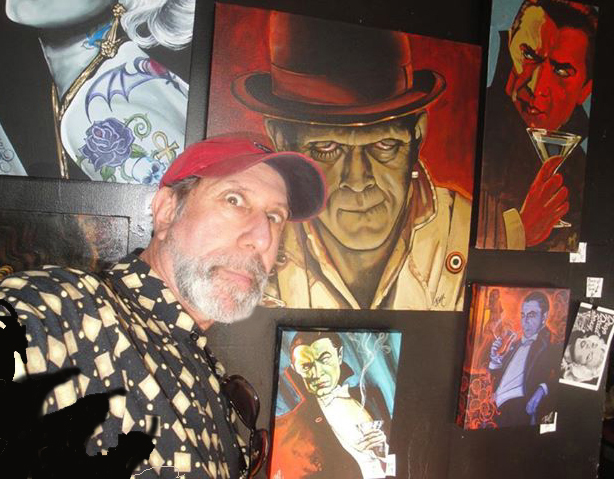
Yours Truly and friends welcome in the New Year 2014


